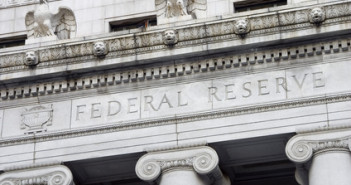The FOMC will likely remain on the sidelines for a second meeting in a row. The balance between the different members remains unchanged and so do indicators.
Any action by the Fed will indicate a very worrying situation among banks, probably on the other side of the Atlantic, but the chances are small. The only hope for action comes from the fact that policy changes were made when there was no accompanying press conference, as it is now. FOMC Preview.
Reasons for inaction
1) Improving economy: Since the last meeting of the Fed in early November, economic indicators continued being upbeat and continued showing an ongoing recovery. The most sensitive issue, employment, provided encouraging signs.
Weekly unemployment claims have gradually dropped, reaching 381K last week. More importantly, Non-Farm Payrolls continued rising, with revisions supporting previous releases. The unemployment rate even dropped to 8.6%.
This surprise might be temporary, but it’s good enough to prevent further action from the Federal Reserve.
2) No deflation QE2 (announced over a year ago) was intended to prevent deflation and it succeeded in that. It didn’t succeed in really helping the economy though.
Currently, deflation is not a threat. Prices are rising and the US economy is growing.
3) High commodity prices: Oil is around $100 per barrel. More QE will fuel up fuel prices and derail the fragile recovery. This will be counter-productive.
All in all, these three reasons should satisfy for no action – just a continuation of Operation Twist to lower long term yields, and a continuation of QE2-Lite – maintaining the balance sheet of the Federal Reserve by reinvesting matured assets.
Europe weighs for action
1) Economy not growing fast enough: There are a few members who support further easing. They view the growth in jobs and the general growth as too weak and they believe that further action can help.
A third quantitative easing program can help in their opinion and may satisfy those who want the Fed to “do something”.
2) Europe Those fearing a new downturn get back wind from the deteriorating situation in Europe. Recession seems imminent in the old continent. In addition, the banking system there is is very fragile.
Rumors suggested that the coordinated action by 6 central banks a few weeks ago was intended to save France’s Credit Agricole from the brink of collapse.
Germany’s Commerzbank is also in need of help, and is negotiating this with the German government. Also here, there are fears that the bank is on the verge of bankruptcy – a bankruptcy that may trigger CDS.
If the Fed does introduce new easing steps, such as QE3, hints of QE3 or any kind of liquidity measures, this will be a sign that banks are very very vulnerable.
3) No press conference: The last FOMC meeting in November was followed by a press conference and included no news. The previous two were not followed by pressers and did include significant changes:
September saw Operation Twist and August saw a pledge to keep rates at low levels until mid-2013. Will this meeting yield action?
Trading the FOMC
But as aforementioned, the chances are low. There is a high probability that no policy change will be seen. In this case, trading the FOMC Statement will likely be a waste of time.
The wording of the economic forecasts will eventually set the tone, but this may take a long time, perhaps only in the European session, many hours after the publication.
If the Fed does surprise with some action, the dollar will dive.
Further reading: Bernanke Out of Bullets, But Market Clings to Hope (For Now)
